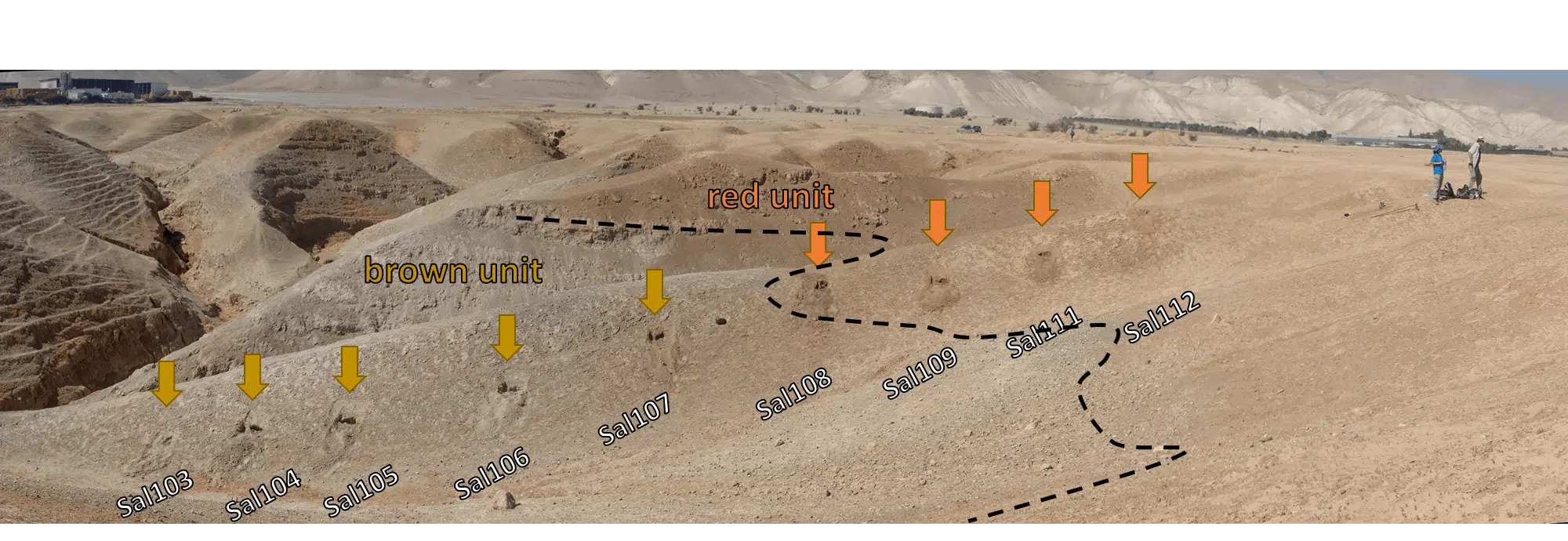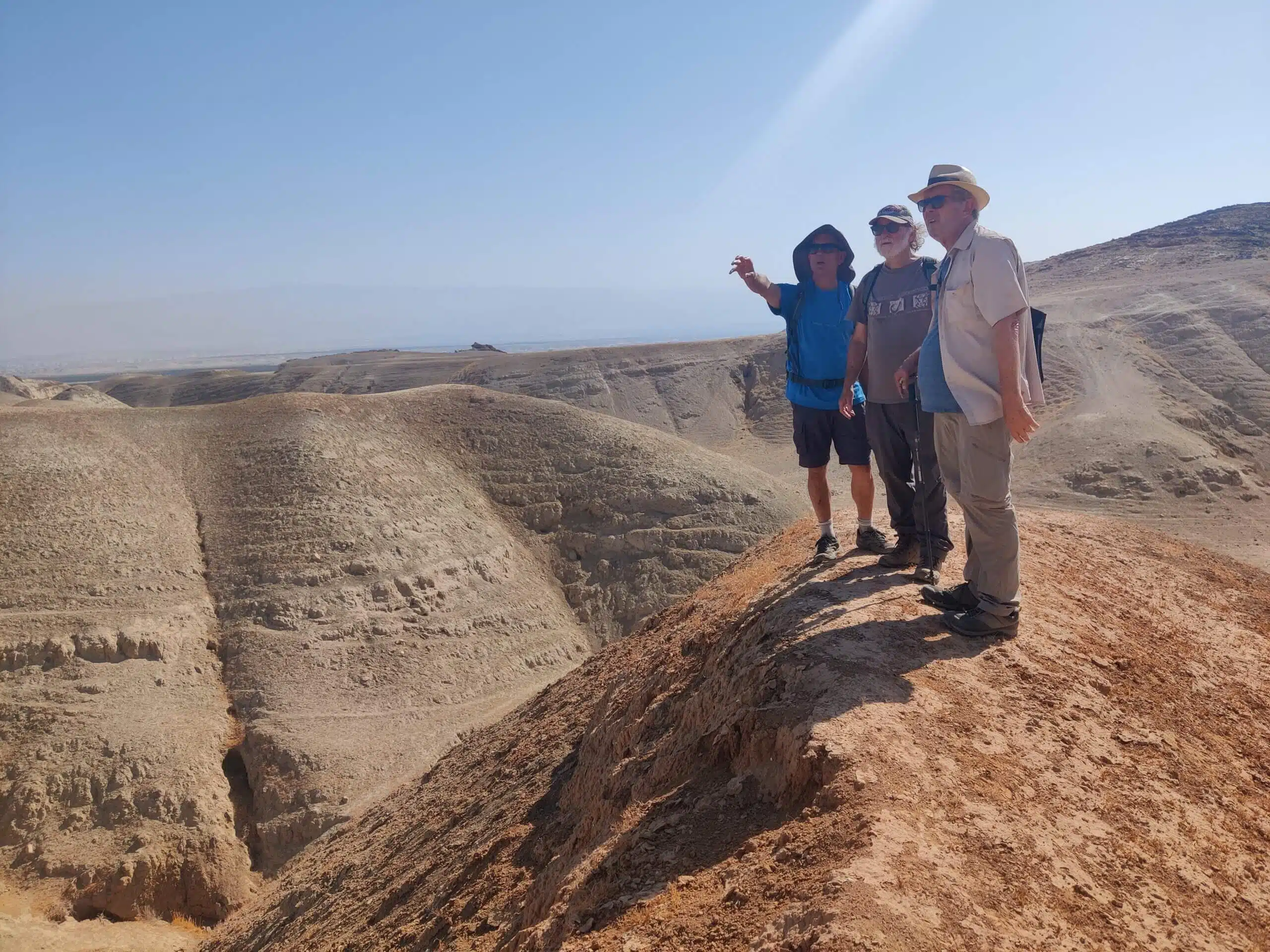Dust that came from the Sahara and Saudi Arabia about 11,000 years ago - contributed to the development of agriculture in the Jordan Valley

In the last tens of thousands of years there have been environmental changes in the Jordan Valley, the Dead Sea and the Sea of Galilee. These changes can teach us about the climate changes in the Middle East in particular, and about processes on Earth in general. Thus, for example, it was found that 23,000 years ago a gradual decrease in the volume of the Dead Sea water began, its level dropped (its height was minus 165 and today it is minus 438) and its area was significantly reduced; Before that, it stretched from Hatzava in the south to the Sea of Galilee in the north and was known as the "Lake of the Tongue" (in the last decades it continues to decrease by 1.20 meters, approximately, every year, mainly due to human activity). In this way, entire areas that were up to that time under water were exposed, and in some of them (for example, Jericho, Gilgal, Netiv Gadod and Petzal) people settled. In other words, the lake receded and humans settled in exposed areas, apparently due to abundant springs and a favorable climate.
Studies have found that during the last ice age, when the Dead Sea lake was at its peak, large amounts of dust came from the Sahara and western Saudi Arabia, through the atmosphere, and accumulated on the surface all over the country, including on the mountains of the Negev, Judea and Samaria. This dust was washed away by rainwater and contributed to the development of different soils, such as terra rossa - a fertile red-brown clay soil, which is common in the mountains of Judea and Samaria (including: "mountain soils").

Prof. Yigal Aral from the Department of Environmental Sciences at the Hebrew University deals with environmental geochemistry - a field that studies the effect of environmental conditions on different regions of the earth. In his current research, which was done in collaboration with Prof. Moti Stein, Prof. Nigel Goring-Morris and Dr. Yoav Ben Dor from the Hebrew University and the Geological Institute, the hypothesis is being tested that at the end of the last ice age, at the same time as the lake receded, the fertile mountain soils were washed into the Jordan Valley, accumulating on The terraces on the edge of the receding lake provided the residents of the area with an opportunity to domesticate the plant and thus contribute to the development of agriculture in the area.
It was found that about 11,000 years ago, during the receding of the lake, evidence of the first domesticated crops (mainly wheat and barley) and the use of tools for cutting and gathering the crop were discovered at several sites in the Jordan Valley (Nativ HaGodon, Petzal and Gilgal).
Prof. Aral says: "The Jordan Valley is one of the centers where the agricultural revolution began, 11,000 years ago. Other centers are northern Mesopotamia (Iraq, Syria and southeastern Turkey), China and America. From these areas, agriculture spread throughout the world and changed the human way of life beyond recognition. We asked ourselves how the farmers of the Jordan Valley were able to develop agriculture - to domesticate existing plants (for example, turn wild wheat into domesticated wheat) and adapt them to their needs (for example, grow more seeds and collect a large amount of harvest). What is the environmental, ecological advantage that made this possible? Is it possible that this is the same dust that came from the Sahara and western Saudi Arabia?"
To answer this question, the researchers collected many soil samples from the terraces that were created in the Jordan Valley 11,000 years ago and terraces that were created there before the agricultural revolution. The period of formation of the terraces is determined by archaeological knowledge and carbon-14 dating - a method for estimating the age of geological and archaeological finds. They compared the soils, examined their properties and components (including nutrients needed by plants) using sedimentological methods (the science that studies the formation of sedimentary rocks and various sediment particles) and pedology (the science that studies the formation of the soil and its properties) - and discovered the first evidence that the soils formed 11,000 years ago were apparently more fertile than those created before them.
"These findings reveal some of the stages of the development of agriculture. The agricultural revolution is the most significant in human history. Thanks to it, humans turned from hunter-gatherers into farmers, the search for food for survival was stopped and the world's population began to grow much faster," Prof. Aral concludes.
More of the topic in Hayadan:
